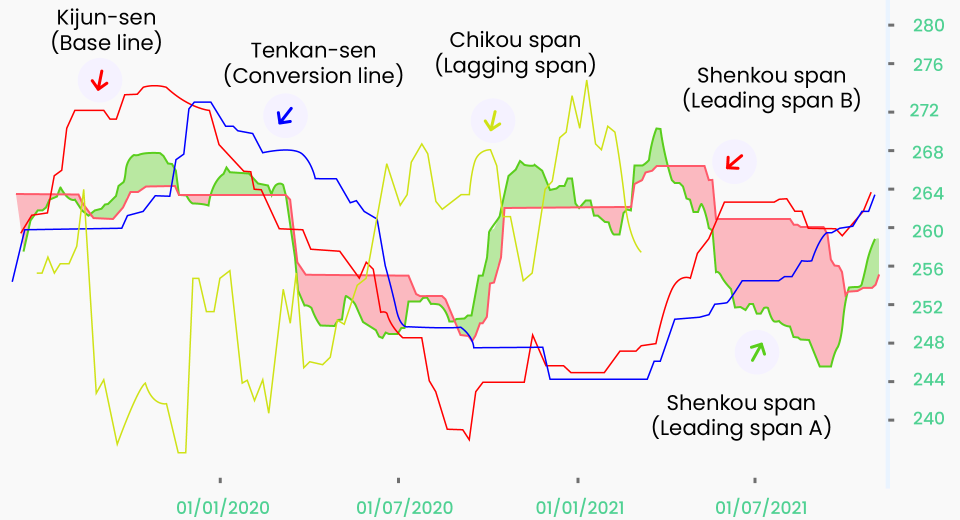Some say, when you are a forex trader, you sleep like a baby – you wake up every hour and cry! Fortunately for us, MetaTrader comes to the rescue, helping us automate trades and sleep like a tired adult! So, if you haven’t tried Expert Advisors or chosen indicators to base your trading decisions on, the time to start is NOW.
But when you start making choices, there are so many things to choose from that, going back to the baby analogy, you feel like a kid in a candy store. There are so many currency pairs and as many time frames to watch them over to identify trends and patterns. So, why restrict your opportunities?
Using Multiple Time Frames
Multiple time frame analysis (MFTA), very simply put, is when you look at a single currency pair across different time frames. If you are a day trader, this is something that is a necessity. Every currency pair exists across different time frames, from one minute to 15 minutes to an hour to daily. There is no limit to how many time frames you can choose to analyze. What you will essentially be doing is making the same analysis (same pair at same price) across different time periods. Most traders tend to stay with three time frames, 15 minutes, an hour and 4 hours.
The reason why multiple time frame analysis is a preferred choice is that is offers better insight into the forex market than analyzing just one time period, therefore giving us better chances of success. The best part is that you don’t need to manually do any of this analysis to create charts. MetaTrader gives you indicators and Expert Advisors that will do all this for you. You can even program the indicator to put all the time frame analyses on a single chart. You don’t need to check anything manually. The indicator puts it all down in chart form for you to gain a deeper understanding.
When you use MFTA, you are basically using trends for smaller time frames to predict longer term trends. When you find that the smaller time trend and the longer time trends are in agreement, entering a spot trade in the direction of the trend is likely to be a safe bet. All you need to do is choose your trend indicators and forex charts and install them on your trading platform. And if you create an Expert Advisor based on your multiple time frame indicators, you don’t even need to be awake to follow the trends to see when a trading opportunity opens up.
Trading in Multiple Currency Pairs
The debate on whether to stick to a single currency pair or diversify your portfolio with multi-pair trading has been going strong for almost as long as there has been an active forex market. While each has their own pros and cons, it was difficult to follow multiple forex pairs on one’s own before the launch of MT4 indicators. Now, you have indicators that are meant to track major currency pairs, like the USD, GBP and EUR, as well as other currency pairs, such as the CHF, CAD, AUD and more. In fact, you can choose one currency and see how it is performing against a variety of other currencies too.
Experts recommend that when using an indicator to track multiple currency pairs, it is useful to use it in combination with other indicators, such as Bollinger Bands, moving average, support and resistance levels, and so on. The indicator will actually help you see trends and patterns that might be difficult to pick up through manual analysis. Giving you better chances of identifying a winning trade.
In addition, when trading multiple pairs, you gain the opportunity to capitalize on currency correlations, where trading in two or more currency pairs that are correlated might increase your chances of making a profit. You also gain the opportunity of trading off the relative strength of multiple pairs. For instance, if you are looking at the USD/JPY pair, where the USD is strong and the JPY is weak, there will be a buy bias in the market to the USD/JPY pair, especially if there is enough volatility. Now, what the indicator can help you do is look as each currency, pairing it against others based on relative weakness or strength, offering you more trading opportunities.
Whether or not you choose to use multiple time frames or currency pairs, base your decision after you learn more about the pros and cons of each, taking into consideration your trading style, experience level and risk appetite.
Disclaimer
If you liked this educational article please consult our Risk Disclosure Notice before starting to trade. Trading leveraged products involves a high level of risk. You may lose more than your invested capital.





